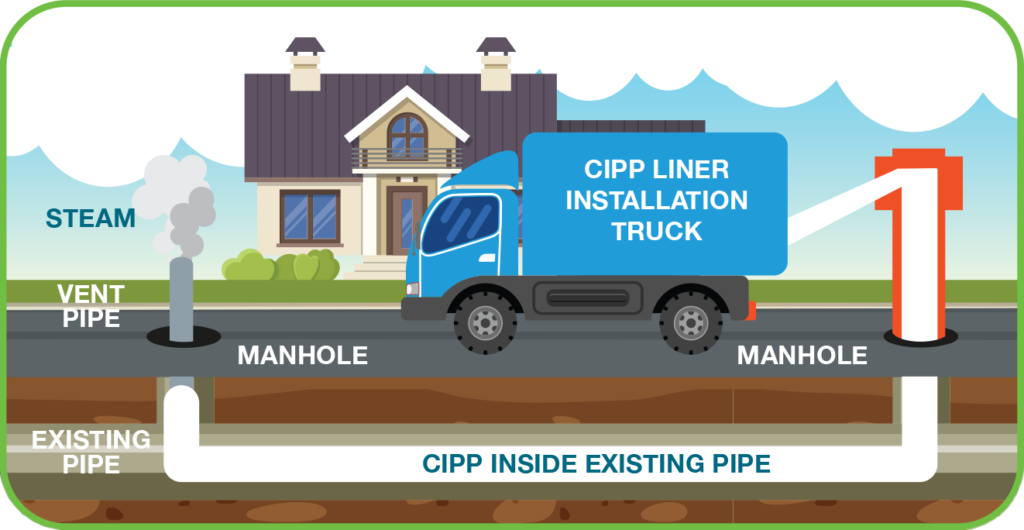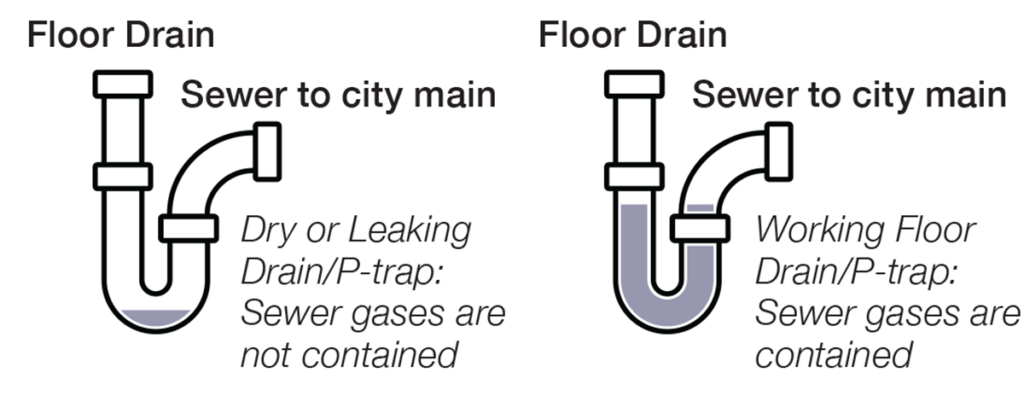Upper Merion Township has contracted AM Liner East, Inc. to rehabilitate the sanitary sewer lines in several sections of the township. Residents of the affected properties will be notified by AM Liner East, Inc. in advance of the work being performed in their area.
THE SEWER PIPE IS BEING REPLACED WITH CURED-IN-PLACE PIPE (CIPP)
What is CIPP?
CIPP is a method used to replace damaged or deteriorated sewer pipe without digging up the existing pipe or disrupting roads, driveways, sidewalks, or landscaping. Since 1971, CIPP has been used to safely reduce construction time, cost and disruptions in sewer service, while minimizing the impact on homes, businesses, traffic, and the environment.
CIPP Installation Process
The process involves installing a resin-saturated felt tube into an existing sewer pipe. Once in place, the tube is inflated to fit tightly inside the original pipe and cured or hardened to create a new plastic pipe within the old pipe. During the process, a steam cloud coming from a 6’ (minimum) vent stack at a manhole may be visible in the air and will dissipate quickly when the process is complete.
What is that odor and why can I smell it in my house?
On occasion, there may be a “glue like” odor during the curing process that arises from the styrene component in the resin used in CIPP. Once the CIPP is fully cured or hardened, the odor will be eliminated.
If you detect an odor in your home, it is likely entering through the pipe that connects your home to the public sewer main. A “U” shaped pipe called a P-trap is located at all drains/plumbing fixtures and is designed to keep sewer gas and other vapors out of your home or building. Floor drains/plumbing fixtures may dry out at the P-trap and allow sewer vapors to enter your home or building.

What can I do to prevent or eliminate the odor?
Pour ½ gallon of water in all plumbing fixtures and drains to fill your P-traps prior to the start of the project. If you smell the odor in your home, ventilate the area by opening windows and doors. Adding more water to the P-traps and using a fan may help eliminate the smell faster. If the odor persists after ventilating, contact the project superintendent.

What is Styrene?
Styrene is a clear, colorless liquid that is synthesized for commercial use from petroleum and natural as byproducts. Styrene also occurs naturally in the environment and is an inherent component in small concentrations of many commonly consumed foods and beverages, such as coffee, strawberries, and cinnamon.
Why is the odor so strong?
Styrene has a very intense, distinctive odor and is detectable by the human nose at very low concentrations (0.1 PPM). The presence of a styrene odor does not indicate a dangerous level.
Is the odor harmful to my family and me?
For the general population in normal circumstances, measured environmental concentrations from CIPP in the air are at levels too low to cause health effects. Short term exposure may cause eye irritation, headache, and discomfort. The EPA guideline for such an airborne concentration would list this as an Acute Exposure Guideline Level -1. EPA defines this as the airborne concentration of a substance above which it is predicted that the general population, including susceptible individuals, could experience notable discomfort, irritation, or certain asymptomatic, non-sensory effects. However, the effects are not disabling and are reversible upon removal from the area.
To learn more about:
- CIPP visit NASSCO.org
- Styrene visit styrene.org, nassco.org, youknowstyrene.org, epa.gov
